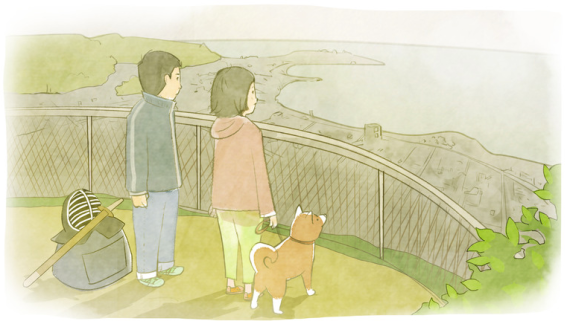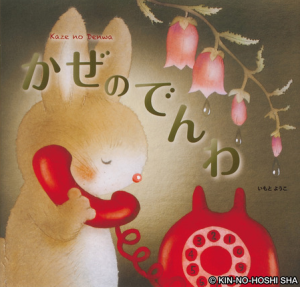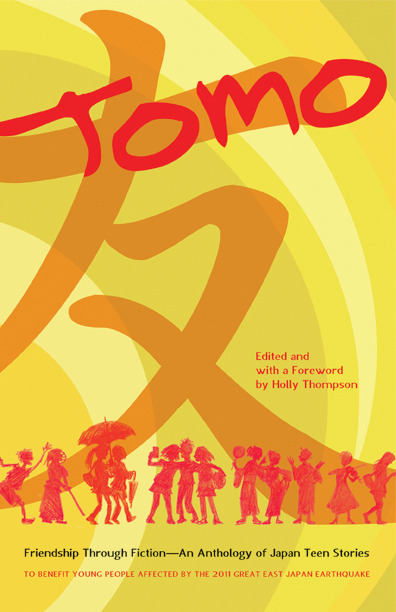By Deborah Iwabuchi, Maebashi, Japan
Avery Fischer Udagawa, translator of the 2022 Mildred L. Batchelder Award-winning Temple Alley Summer by Sachiko Kashiwaba, has translated a second book by the same author. The House of the Lost on the Cape (岬のマヨイガ) is set in the Tōhoku region during and right after the March 11, 2011 earthquake and tsunami disaster. It was published by Restless Books in English in September 2023, but the original was serialized in the children’s section of a Tōhoku newspaper (Iwate Nippō) in 2014–15, before being published as a book by Kodansha in 2015.

The story begins with an older woman about to check herself into a home for the elderly, a woman fleeing an abusive husband, and a little girl, recently orphaned and on her way to go live with an uncle she has never met. The earthquake and tsunami come as each member of the trio arrives in the town of Kitsunezaki, and they all end up at an evacuation shelter.
Deborah Iwabuchi: Avery, there are so many aspects of this book that I’d love to discuss with you. Since it was first published in the junior section of a Tōhoku newspaper in the 2010s, Kashiwaba obviously had young disaster survivors in mind. Although the story is full of magic and mythical creatures, it must also have resonated in the hearts of young readers due to the reality they had experienced. The three main characters are all female, but more importantly, they represent some of the most vulnerable segments of society. It turns out, though, that their heartbreaking experiences make them strong and resilient.
Avery Fischer Udagawa: You’re right, Deborah. I think this may be part of why the story moves people in many different contexts, though it was first written for youth in Iwate. Sachiko Kashiwaba grew up in Iwate, in the towns of Miyako-shi, Tōno, and Hanamaki—home to author Kenji Miyazawa—and has lived throughout her adult life in the prefectural capital of Morioka.
(Tōhoku has six prefectures: Akita, Aomori, Fukushima, Iwate, Miyagi, and Yamagata. Fukushima, Iwate, and Miyagi were hardest hit in March 2011, being located on the Pacific coast.)
Deborah: What I also found fascinating was that while in reality, so many people had to evacuate from locations in Iwate, the three main characters in the story ended up escaping to it—specifically to the fictional town of Kitsunezaki.
Avery: Indeed, their story shows how people can reach a place of feeling safe, even blessed, in a situation of hardship and grief. I think this is a helpful message for readers, both as validation if they have had a similar experience, and also as a source of hope if they are suffering.
Deborah: Three years after 2011, this story brought up the disaster in a way that validated young readers in what they probably remembered about what happened. Toward the end, a legendary snake conjures the forms of friends and family who moved away from Iwate right after the disaster. I thought that the characters’ attachment to these apparitions demonstrated how very natural it was to miss people. The main characters’ perseverance must also have allowed the initial readers of the story—people who had stayed put in Iwate—to be happy that they had stayed despite the crisis. This novel is an adventure for sure, but the author manages to comfort and empathize with her characters and her readers, as well as encourage them to believe in their own resourcefulness.
And it is a story for our times. There are so many natural and unnatural disasters these days. This book seems to offer a useful way to process things with children who are thrown off balance.
Avery: Indeed, in her review of the book, Hong Kong author Maureen Tai quoted these lines by US author Kate DiCamillo:
“So that’s the question, I guess, for you and for me and for all of us trying to do this sacred task of telling stories for the young: How do we tell the truth and make that truth bearable?”
Maureen wrote, and I agree, that Sachiko Kashiwaba tells the truth and makes it bearable in The House of the Lost on the Cape. This novel joins others from around the world that impart hope while also telling children the truth about tragedy, such as (to name just a few):
- The Raven’s Children by Yulia Yakovleva, translated from Russian by Ruth Ahmedzai Kemp, set in Stalinist Russia
- Dragonfly Eyes by Cao Wenxuan, translated from Chinese by Helen Wang, set during China’s Cultural Revolution
- Wild Poppies by Haya Saleh, translated from Arabic by Marcia Lynx Qualey, set during the Syrian War
I believe young people can all benefit from these portraits of hanging on when hope is in extremely short supply. And these stories serve the practical purpose of informing their readers. Even in Japan, elementary and middle schools are now full of children born since March 2011, who need to know what happened in Tōhoku.
Deborah: Getting down to the nuts and bolts, many people who have read your translation are impressed by the way you worked Japanese words into the English text. There were lots of names and nouns, and you dealt with onomatopoeia that’s so great in the Japanese language for its simplicity, but can be a real headache for J to E translators for whom that simplicity is elusive. How did you decide which words to leave in Japanese? Did you have a specific reader in mind?
Avery: I knew from the beginning that I was translating for children in the US, home of Yonder: Restless Books for Young Readers, which had commissioned the translation. Anime, manga, and translated literature have made American readers far more aware of Japanese culture than when (say) I was a child in Kansas, so I wanted to leave plenty of Japan-isms in the pages—mochi, futon, miso, kimono. At the same time, I wanted to keep readers oriented, so I inserted brief glosses where terms that were less widely known first appeared: river spirits after kappa, mats after tatami, porch after engawa. I received valuable input from the Restless editorial team when it came to deciding all of this. I appreciated their openness to transliterating Kashiwaba-san’s onomatopoeia for the sound of the tsunami slamming the base of a train platform in the opening chapter, as honestly, I had no words.
Deborah: Although it looks effortless on the page, I imagine there was more involved in actually developing the translation. Can you tell us about that? I know you are personally acquainted with Sachiko Kashiwaba. Did you work with her at all?
Avery: I definitely exchanged email with her while working on the translation. I also got to see her in Washington, D.C. to accept the Batchelder Award for Temple Alley Summer after I had completed the first draft of The House of the Lost on the Cape. And she and I presented in Hong Kong at the Hong Kong Young Readers Festival and International Literary Festival in March 2023, when Cape was in the final stages of the editorial process.
The experience of co-presenting helped me get to know Sachiko Kashiwaba better as a person, which surely fed development of the translation. For example, seeing the way she spoke to students in Hong Kong about the March 11 anniversary (which fell right when we were there), I realized that she clearly wished to inform people about it as well as to support survivors. That emboldened me to make the translation slightly more explanatory. For example, the opening words are あの日, literally “that day” as in “that day that’s seared in all our minds,” but after Hong Kong, I felt better making this “On March 11, 2011.”
Due to Japan’s long Covid-era border closures, I was not able to enter Japan while I translated The House of the Lost on the Cape—a situation that made me nervous at times. Many, many elements of it were specific to Iwate, especially to Morioka and Tōno. My family and I traveled there this past summer after the manuscript had been submitted, and I fretted that I might discover some key detail I had missed while translating about Iwate from afar. In Morioka, I caught myself mis-pronouncing the name of a street where an important Jizō statue is located, and back at our hotel, I whipped out my laptop to make sure I had named the street correctly in the manuscript. Fortunately, I had!
One step I am glad I took during the translation process was hiring Chikako Imoto, an eagle-eyed wordsmith with formidable cultural and research savvy, to do an accuracy pass. Her go-over focused not on the effectiveness of the English, but purely on whether I had caught every bit of the source text. Sometimes, I get so wrapped up in crafting the translation that I drop a line or miss a meaning that should be blindingly obvious, and Chikako saved me from myself. I also enlisted my husband and daughters and various other unsuspecting souls in my effort to make Cape as faithful and readable as possible—and the staff at Restless Books found many ways to polish and improve.
Deborah: Like Temple Alley Summer, The House of the Lost on the Cape has a story (or stories) within a story. The role of the folklore in this book is different as is the way it is communicated.
Avery: Right. While Temple Alley Summer has an embedded fantasy story whose authorship the characters investigate, and which appears in two long sections, The House of the Lost on the Cape features short interludes where the elder character Kiwa tells a folktale. Some of the folklore she shares is found in a real collection called the Tōno monogatari (Legends of Tōno); other material was created by Sachiko Kashiwaba in keeping with the spirit of the Tōno legends, which she has adapted in a volume for children. Another difference in The House of the Lost on the Cape is that creatures from folklore make appearances in the main story!
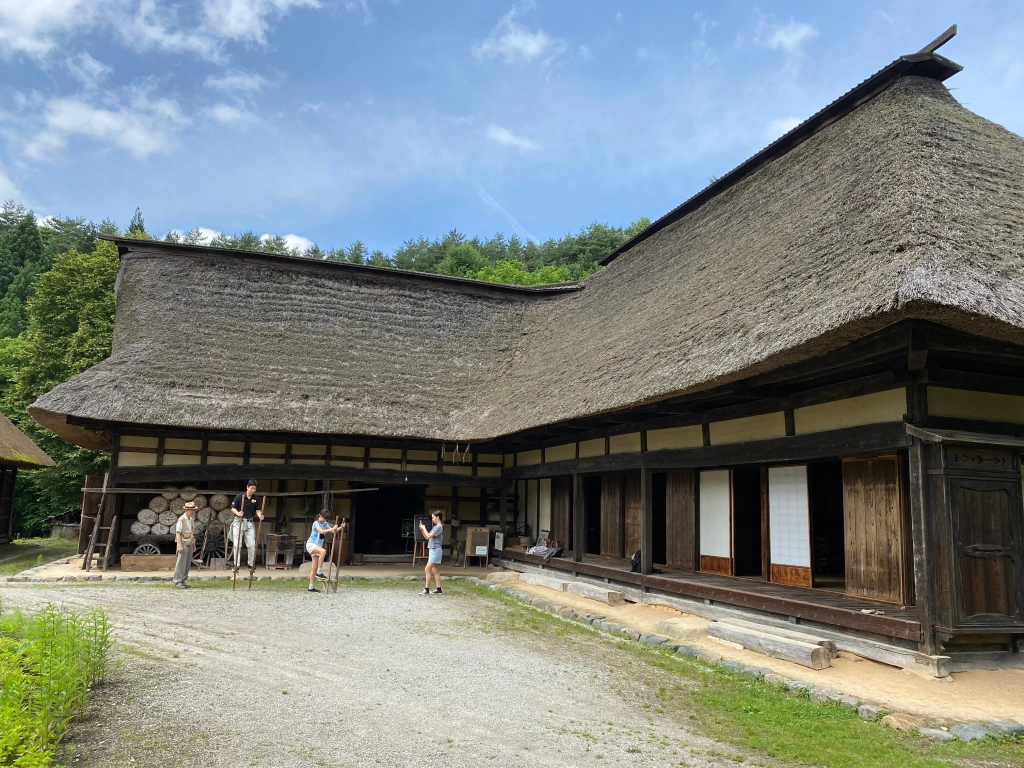
Deborah: I love the illustrations by Yukiko Saito (see View the Illustrations here). Did you get to see them as you did the translation? Even when reading the translation and even though I’ve lived in Japan most of my life, I found the illustrations helpful for confirming certain details. Not to mention the wonderful map of Kitsunezaki in the endpapers. I see the Japanese version had the same illustrator, were any illustrations added for the English version?
Avery: I worked from the 2015 Kodansha edition of the book, which had all of the same illustrations by Yukiko Saito. None were added for the Restless edition, all were kept, and some of my decisions about what to explain (or not) were based on information the illustrations provide. They especially help convey the atmosphere of traditional shrine dances, as well as the characteristics of various spirits and deities who defend the Kitsunezaki community. But I won’t spoil here their daring and dazzling deeds!
Deborah: Avery, thanks so much for this interview! As usual, talking with the translator reveals so much about a book and its author, along with the actual process of translation. I’d also like to note to readers here that Avery’s name is on the cover of The House of the Lost on the Cape. Naming the translator of a children’s book prominently is now a requirement for the Batchelder Award.
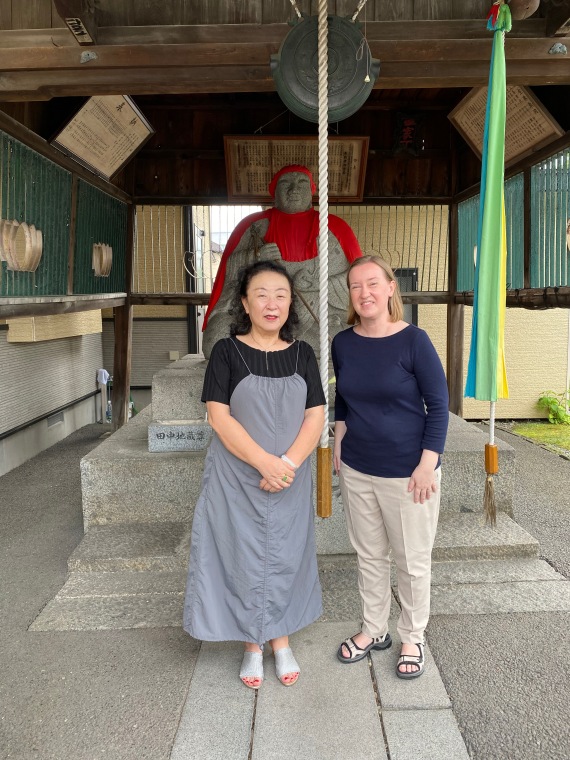









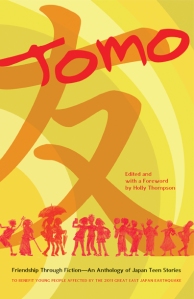 This month also marks five years since the publication of
This month also marks five years since the publication of 